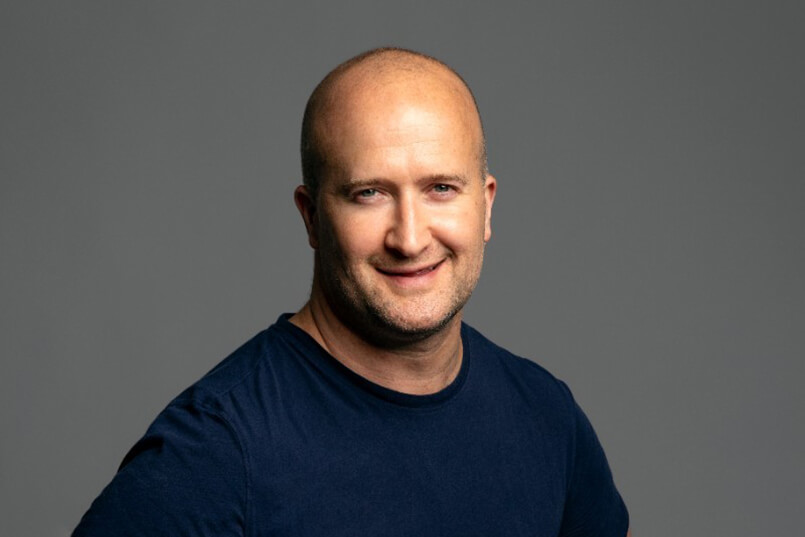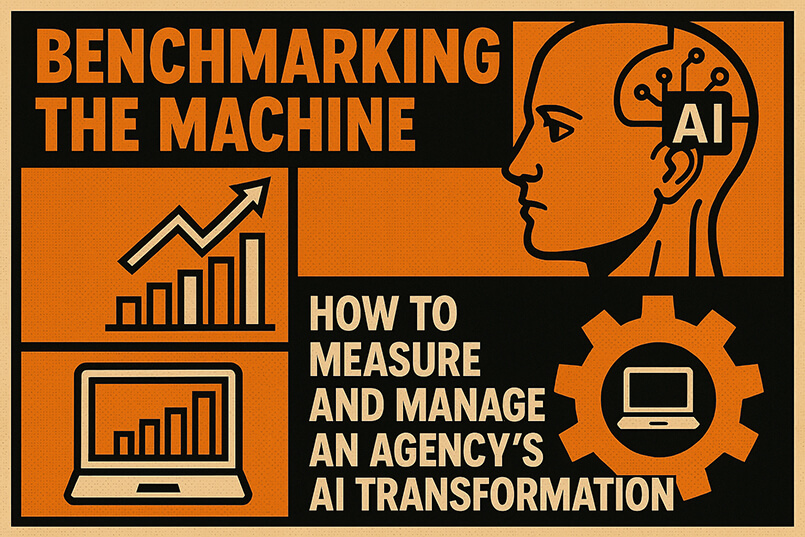“I don’t know what I don’t know”
Have you heard this lately?
Or have you found yourself saying this lately?
It’s a phrase that seems to keep popping up in marketing management circles.
And one that I also use from time to time to help keep up with the never-ending stream of new technologies, data services, digital platforms and media opportunities.
It’s a great way of fleshing out information from a supplier, but also a way of determining someone’s actual capability and level of knowledge.
I met with a global media manager, head of procurement and a digital leader last week.
It was a great meeting, and the conversation went in a variety of directions, however two key questions stood out for me at different stages of the meeting:
1. How much budget should we spend on digital media?
2. What opportunities are you seeing with technology?
Great questions. Yet both were followed by the same words:
“I don’t know what I don’t know”
So were they testing me? Or were they genuinely wanting to find out some secret sauce?
Let’s tackle the first question: “how much budget should we spend on digital media?”
To answer this I felt like a Politician. I answered with questions. Steering them away from a % split of their budget, and asking them what they were trying to achieve? What’s their strategy? And what current activity is in place that is being measured back to their objectives?
As the conversation progressed, it was clear that the business (and its advertising agencies) were stuck in the perennial problem of looking at a marketing budget as a cost.
There was very little discussion around the output, value or impact of media channels and formats.
Alarmingly, there was a wealth of media tracking data, along with a wealth of retail data that could be matched and mapped down to a store level to identify the impact of their digital marketing spend, that simply wasn’t being looked at.
So rather than looking at a % split for digital channels, it would be more prudent to dive into the data that they had access to and derive a value based model.
Or if this feels uncomfortable and all too hard, then just put all your budget into Snapchat based on their algorithmic feed and interest based targeting opportunities, now that they’ve updated their privacy policy (March 2016) to say “including ads”. Hmmmm, OK, please don’t do that!
Turning now to the second question: “what opportunities are you seeing with technology?”
Again it felt like a fishing exercise rather than grounding it in business or marketing strategy. Technology is really just an enabler for consumers or customers to engage with a business (brand, product or service).
So whilst there are amazing technology-led solutions available to marketers, it’s important to sift through the bells and whistles and determine what you really need.
I was also with a media agency recently discussing programmatic media.
Unfortunately for too many clients, programmatic activity represents trading that allows robots and low quality inventory to be picked up. However this particular media agency reinforced that their focus was purely on high quality inventory – inventory that was sighted by a human. As well as inventory that was being seen by people, rather than bots.
A great differentiator for this particular agency. And something that more media agencies should implement.
However, in answer to opportunities with technology I opened up several areas such as advanced re-targeting, customer journey tracking, wearable tech tests, social media evolutions with Snapchat and Instagram and so on. By the way, if you’re looking for Millennial and other social media usage and engagement stats, then here’s a good source.
Plus, we touched on these 4 areas:
Virtual reality
It seems like everyone’s getting on the VR/AR band wagon. At this year’s CES, it was all the rage. I also passed Samsung’s Gear VR billboard ad this morning whilst driving through Crow’s Nest in Sydney.
More details here if you’re keen to read about Oculus Rift, HTC Vive, Sony’s Playstation VR et al.
Neuroscience
Marketing has been discovering neuroscience for years now, to try and unlock the secret of brain activity. However, it feels like activity is ranging from gimmicky to cautionary.
Here’s a campaign by Isobar for Uniqlo. I’ll let you be the judge.
Drones
Just as drones are starting to take hold for commercial use, marketers are starting to implement activity with the help of drones. From the initial area of aerial photography/videography, through to flying billboards, pseudo actors in videos / ads (eg: Pepsi Max’s Drone Football ) as well as data collection tests on location-based consumer profiling without the need for GPS or networks.
Mobile apps
Why pay for the cost of putting your app in an App Store when you can create a Shareable App and bypass App Stores altogether?
Have you heard of Shareable Apps? They’re lower cost to develop, offer greater flexibility and scalability, and allow users to simply text or email the app to a friend. Perfect for brands wanting to create a groundswell of consumer activity, drive social engagement around events, and build on their data-driven marketing activity. More here if you’re interested.
I’m sure you’re seeing many more technology opportunities too. What’s tickling your fancy?
A disconnect between marketers and service providers
When talking about digital and technology-led ideas, marketers and agencies often get caught up in the latest and greatest. Which is great for early adopters and bleeding edge tests.
However, who do you trust? Who has the expertise that you’re actually looking for when you’re not sure what you’re looking for? And don’t all agencies simply offer digital services now?
To finish off this post, I thought it would be helpful to look at the types of service providers now available in the digital market.
We’re working on a project at the moment, where a marketing leader has asked these questions as they’re struggling to keep up with the changing landscape.
So whilst many traditional marketers are asking the same questions, many agencies are moving ahead and almost dropping the word digital, as the world has gone digital. Hence there’s a disconnect occurring between marketers and service providers.
Here’s a high level summary of ten differing skillsets when it comes to identifying digital service providers (by no means exhaustive, but a starting point to help you consider what you may need):
1. Strategic digital agencies.
These are grounded in consumer and business strategy rather than digital only strategy. Beware. There is a big difference in skillset and capability versus those that simply talk about digital ideas as a strategy.
2. Digital innovation agencies.
These are grounded in ideation and innovation. Creatively pushing the boundaries on what’s available and taking brands into unchartered waters. Don’t ask them for best practice case studies unless you’re willing to be the next best practice!
3. Digital creative agencies.
These are more aligned to taking brand ideas and bringing them to life in a world of relevant digital touch points. As well as developing stand alone digital ideas.
4. Technology & production led agencies, vendors and platforms.
Beware, as creative agencies often outsource to technology specialists to develop solutions. However it’s more than simply developing.
Technology-led providers focus on understanding your IT set up and capability, technology stack and local and global (if appropriate) systems integration limitations and opportunities. As well as the data flows throughout your digital ecosystem.
But again be careful, as many are aligned to specific hardware, software and platforms and may simply be pedaling their solution as the best without an independent view.
5. Social and content marketing agencies.
Sorry to lump social agencies and CM agencies as one. In reality there are wide-ranging skillsets within this area. However that’s the point. If you’re currently running social media activity and have community managers, then you are creating content.
But you’ll need to consider whether it’s purely social activity for the sake of being in social, or whether you can monetize your activity through content partnerships.
6. E, m, s, H2H-Commerce agencies.
Again, these vary greatly from mobile centric to traditional e-commerce specialists. And everything in between. It’s a whole new world when it comes to digital selling, so it’s important to find an agency or partner that understands your stage of digital maturity and can set out a pathway to scale and success. For example it’s not as simple as testing Google’s enhanced product listing ads (PLAs) with 8 product options when competitors may be utilizing the same strategy. It’s important to understand the balance between keywords and PLA impressions, impact and interaction.
7. Data-driven agencies.
These are typically schooled in direct response, with an eye on digital engagement from a cost per lead, cost per acquisition, and return on investment point of view. However beware, as most digital agencies talk “data”, but it takes a data-driven agency to understand the value of data from a business point of view versus simply a reporting of activity point of view.
There are also tagging, tracking and database solutions which open up another area of expertise.
8. Organic search (search engine optimisation) agencies.
As old as the hills now. However it takes a SEO specialist with deep knowledge of the changing search landscape to understand the opportunities for your website/s. Three clients that I met with in the past couple of weeks have been totally ignoring SEO. There were immediate quick wins that they could implement to improve traffic quality.
9. Paid search agencies.
Also an oldie but a goodie. There are pure play search agencies, agencies that bolt a search offering into their agency (media and creative), and those that are now under the guise of programmatic trading.
There’s a plethora of new tools for targeting, re-targeting, and contextual targeting including Google ecommerce, image search, social behaviour and video content opportunities.
However, it’s also important to bridge the gap between paid and organic. Processes need to be put in place to align strategies and learnings in order to optimise for your business and not simply optimise for each discipline.
10. Digital media agencies.
Of course most media is now digital, however media agencies have been evolving over the past decade to successfully integrate digital activity into their business model.
Resources, inter-department processes, charge out rates and commissions vary widely. It’s important to delve deep into media agencies to unearth alignment to publishers, specific capability, available media commissions, data ownership, and value-based optimisation.
***
If you’re still reading, then firstly a big thank you for your time.
Secondly, if you still find yourself saying “I don’t know what I don’t know”, then maybe it’s time to get an unbiased market view.
It’s our job to keep abreast of the evolving digital agency and technology vendor landscape from an impartial and independent point of view.
Agencies enter a wide variety of information into our Agency Register. We can then scan the information for specific client requests, whether it be a pitch or identifying a discipline specific service provider.
We also visit agencies and technology vendors every week to see their resources first hand, assess their agency culture, and identify the reality of their positioning, technology and offering. So we can share what we’ve observed and identified.
Maybe you’d like an introduction to a relevant agency or technology vendor via our Perfect Match service?
If so, then lets grab a virtual or real coffee and chat further.
Are you struggling with the complexity that digital and data offer to business? Let TrinityP3 make sense of the new digital ecosystem for you. Details here




